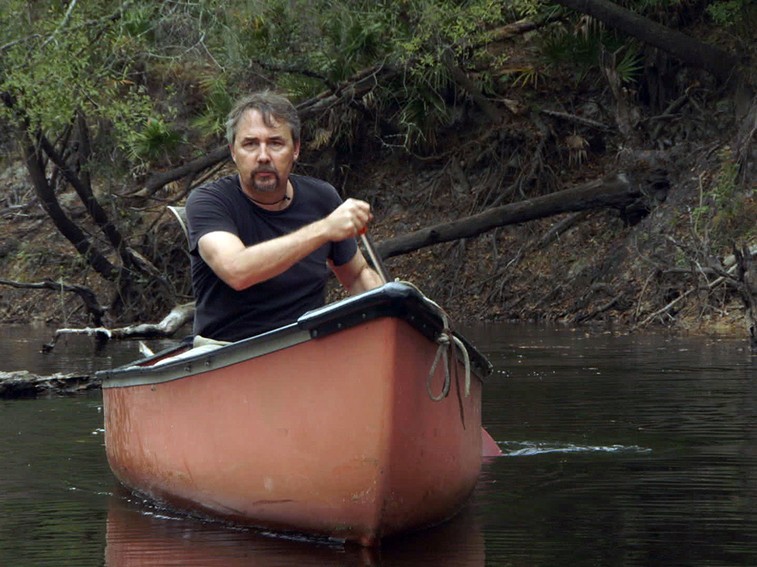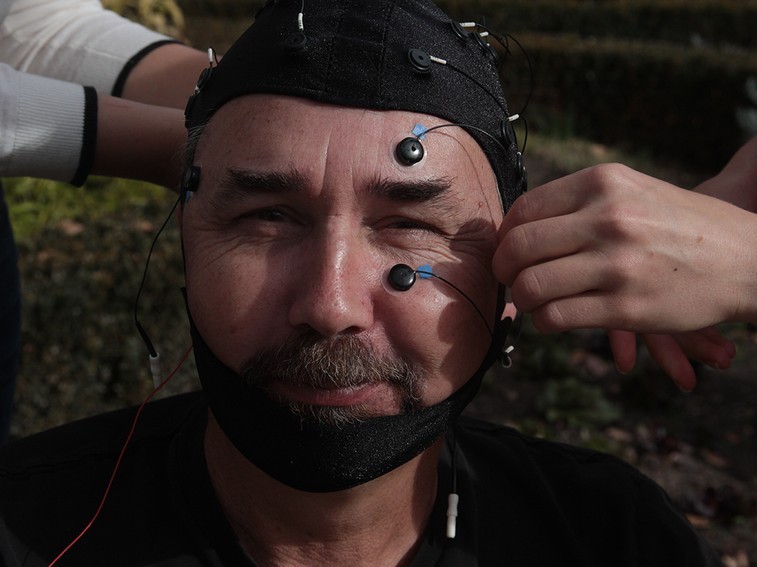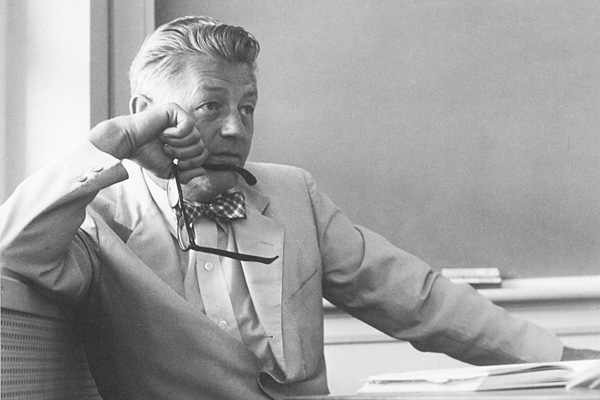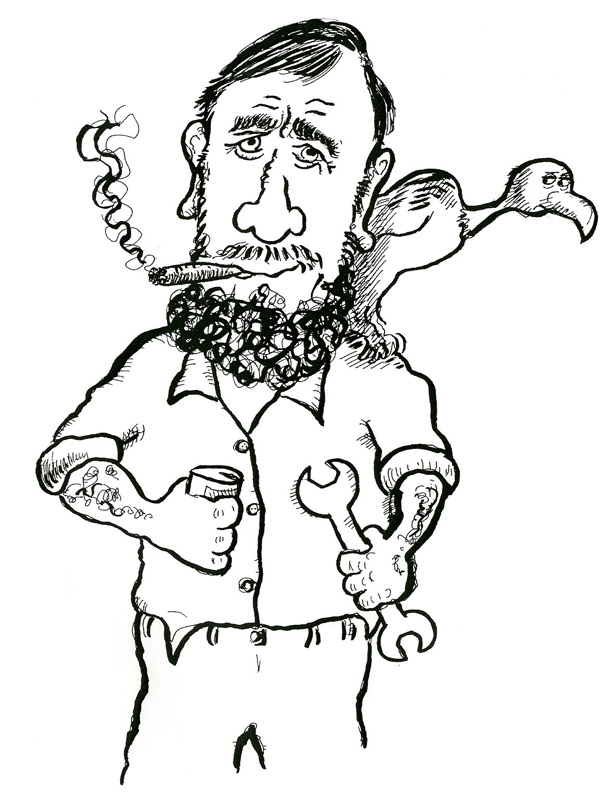W.W. Norton and Company
All The Wild That Remains
Edward Abbey, Wallace Stegner and the American West

Overview:
An homage to the West and to two great writers who set the standard for all who celebrate and defend it.
Archetypal wild man Edward Abbey and proper, dedicated Wallace Stegner left their footprints all over the western landscape. Now, award-winning nature writer David Gessner follows the ghosts of these two remarkable writer-environmentalists from Stegner’s birthplace in Saskatchewan to the site of Abbey’s pilgrimages to Arches National Park in Utah, braiding their stories and asking how they speak to the lives of all those who care about the West.




Accolades For All The Wild That Remains
A New York Times Bestseller
A Kirkus Best Book of 2015 and Best Book about Significant Figures in the Arts and Humanities
A Christian Science Monitor’s Top Ten Nonfiction Book of the Year
A Southwest Book of the Year
A Smithsonian Best History Book
To the Best of Our Knowledge Top Ten Book
An Amazon Best Nonfiction Book of 2015
More About The Book
If Stegner and Abbey are like rivers, then Gessner is the smart, funny, well-informed river guide who can tell a good story and interpret what you’re seeing,” writes the Los Angeles Review of Books. As western rivers dry up and western land cracks from aridity, the voices of Wallace Stegner and Edward Abbey have never been more important. Those voices can be heard, loud and clear, in All the Wild that Remains. The book takes the long view of the land, and of the importance of having deep conversations with our literary ancestors, and speaks to the crisis of climate and drought that is occurring right now. Stegner and Abbey put what is happening in historical perspective, but they were not detached scholars who sat back in a crisis. They both acted. They understood the land they loved, sure, but also fought for it. And of course they also wrote beautifully about it.
Gessner’s book serves as an excellent primer to readers new to Abbey and Stegner, and an insightful explanation of their continuing relevance. Gessner, an important nature writer and editor in his own right, also uses the writers’ lives as a template for his exploration of the Western landscape they lived in and wrote about. He visits places that were important to Abbey and Stegner, and draws trenchant conclusions about the current state of affairs in a region still battling over how to best protect and exploit its fragile resources.
Gessner’s reporting, whether profiling Stegner and Abbey’s acolyte Wendell Berry or observing the consequences of Vernal, Utah’s fracking boom, is vivid and personable. In his able hands, Abbey and Stegner’s legacy is refreshed for a new generation of readers. Perhaps now even the Easterners will take notice, according to The Washington Post.
Gessner’s wacky sense of humor and rigorous mind, his delight in, as he calls it, “an antidote to the virtual age,” and, especially, “the lost art of lounging” — have never been more evident than in his beautifully conceived new book, All the Wild That Remains: Edward Abbey, Wallace Stegner, and the American West. This timely mash-up of environmental journalism, biography, travel writing, and literary criticism has Gessner hitting the road in search of the real story behind “two of the most effective environmental fighters of the 20th century…What emerges is a joyful adventure in geography and in reading — and in coming to terms with how the domestic and the wild can co-exist over time,” writes Joy Horowitz of The Los Angeles Review of Books.
“They are legends, Abbey and Stegner, and bringing them together in a book like this, in the manner chosen by Gessner, was a stroke of genius.” – Dallas Morning News
“If Stegner and Abbey are like rivers, then Gessner is the smart, funny, well-informed river guide who can tell a good story and interpret what you’re seeing.” – The Los Angeles Review of Books
“These two men are the contrasting heroes of a profoundly relevant and readable new book by David Gessner: All the Wild That Remains: Edward Abbey, Wallace Stegner, and the American West. In this artful combination of nature writing, biography, literary criticism, and cultural history, Gessner studies two fascinating characters who fought through prose and politics to defend the fragile ecologies and transcendent beauties of the West.” – The Christian Science Monitor
“This book rubs Abbey and Stegner’s history in the dust and sand so beloved to them, posing these two late icons among voices, landscapes, and arguments that endure in western wilderness, deftly creating a larger geographic chronicle.” – Craig Childs, author of House of Rain
BOOK REVIEWS
David Gessner has been a font of creativity ever since the 1980s, when he published provocative political cartoons in that famous campus magazine, the Harvard Crimson. These days he’s a naturalist, a professor and a master of the art of telling humorous and thought-provoking narratives about unusual people in out-of-the way-places. To his highly original body of work, he brings a sense of awe for the untamed universe and a profound appreciation for the raucous literature of the West. All the Wild That Remains ought to be devoured by everyone who cares about the Earth and its future. ‘For me there is no wild life without a moral life,’ Gessner writes with all the force that Henry David Thoreau might have expressed. All the Wild That Remains offers a contemporary call of the wild that resonates loudly and clearly from one coast to the other.
The San Francisco Chronicle
“As I was reading All the Wild That Remains, I found myself wondering if Gessner too had not written a book that would make people act. And I wondered how this so-called biography could deliver such an emotional punch. I was expecting to be educated, but not inspired, not for the raw spirit of these two men to rise from the language into my consciousness….The loose but artful weave of the two narratives gives the book a rare creative tension. But it is deepened by a third narrative line, that of Gessner himself, the first-person storyteller, whose honest voice is full of insight and humor.”
The Chicago Tribune
Gessner’s book serves as an excellent primer to readers new to Abbey and Stegner, and an insightful explanation of their continuing relevance. Gessner, an important nature writer and editor in his own right, also uses the writers’ lives as a template for his exploration of the Western landscape they lived in and wrote about. He visits places that were important to Abbey and Stegner, and draws trenchant conclusions about the current state of affairs in a region still battling over how to best protect and exploit its fragile resources. Gessner’s reporting, whether profiling Stegner and Abbey’s acolyte Wendell Berry or observing the consequences of Vernal, Utah’s fracking boom, is vivid and personable. In his able hands, Abbey and Stegner’s legacy is refreshed for a new generation of readers. Perhaps now even the Easterners will take notice.
The Washington Post




